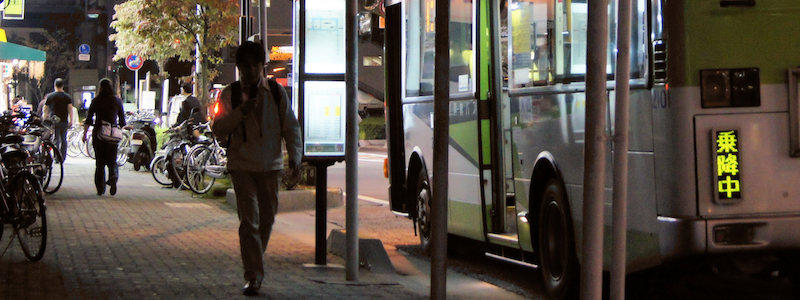There are hundreds of bus companies operating services within and between towns and cities across Japan. Buses are frequently used in areas not served by a rail line, particularly in the countryside and in mountainous regions. There are also many inter-city services, including night buses that travel vast distances across the country.
Tickets and Fares
On regular buses, fares may be charged at a flat rate, or according to the distance travelled. Many buses now accept IC cards as payment. In central Tokyo, where most bus services cost around ¥210, the fare is paid when you board the bus. If you pay with your PASMO or Suica card and change buses within 90 minutes from the time you boarded the first bus, the fare for the second bus will be 100 Yen. The fare for the third bus will be 200 Yen again, and 100 Yen for the fourth bus. Night buses, operating between central Tokyo and outlying areas after regular bus services end, offer an alternative to expensive late night taxi fares.
On buses that charge according to distance, you will often collect a numbered ticket on boarding the bus that corresponds to your boarding point. The price for each boarding point appears on an electronic display at the front of the bus, which increases the further you travel. When you disembark, you pay this amount into the plastic slot beside the driver. A machine for making change is often also attached.
Fares for inter-city highway bus services, like trains, are not generally any cheaper if you book in advance. However, seasonal discounts and combination tickets may be available. It’s worth checking the route provider for more information.
